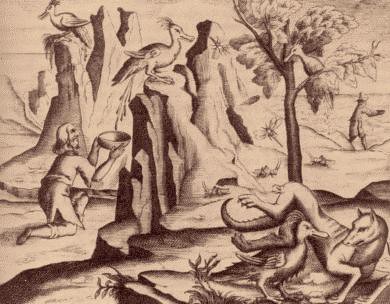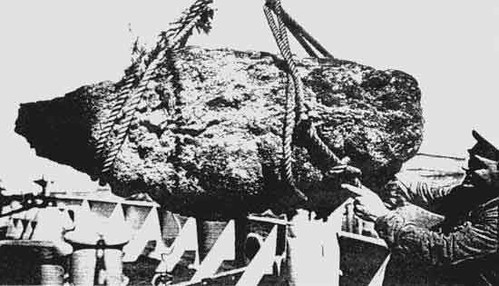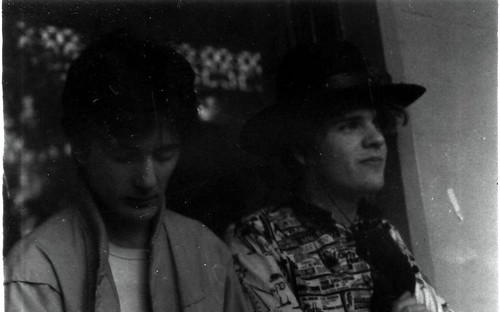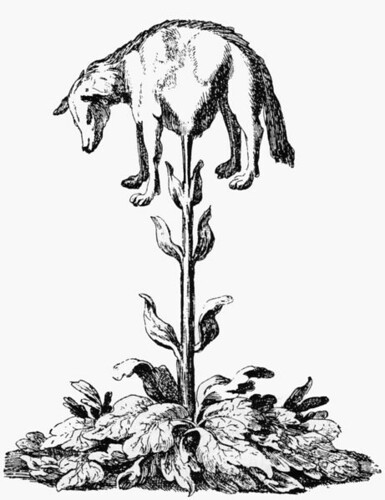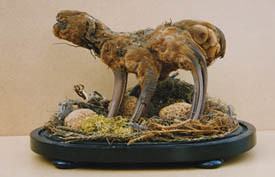The excruciating sound of stretching rubber told us that we were emerging from crepus-space.
I rose from my bed and rubbed sleep from my eyes. I did not know how long I had been asleep. I donned my ship suit and seated myself at the control console. The bluish light of Elixesse was still faint. We must have been in the very outer reaches of the system
The Ørn broke its silence.
- We’ve encountered an obstacle. A sensor shell.
- Transmitted from the fourth planet?
- It is almost certainly reporting to the Urograffin. And it is extremely sophisticated, extremely sensitive. There is no way a ship of my bulk can pass undetected.
- Even in crepus-space?
- It monitors normal space, crepus-space and the cryptic Urschleim.
- They have something to hide, clearly.
- If you were casually eviscerating a rare and truly beautiful lifeform - certainly the only one of its kind in the galaxy - you might also be sensitive about being observed.
- How far out are we? I asked.
- The sensory construct is ten AU in radius and we are anchored at its edge. We must decide now whether to penetrate openly and invite a hostile reaction – or find a quiet way through.
- The latter, I would say. Ultimately, it may allow us more options.
The Ørn readied a Penetrator which Robert had recently serviced in the hold and named Lorraine. It was abyssal black in colour. Its smooth organic lines resolved into an arrow-like form at the front and dissolved into a cluster of Urschleim flutes at the rear that, even now, were waving gently in the unseen winds of the universe’s underlying chaos. Every surface of the Lorraine was dotted with disc-like crepus organs. More than anything the vessel resembled a terrestrial squid. It was small, with no room for a flesh and blood pilot.
I eased on a virtuality balloon, clipping the breathing and feeding attachments into place. To the unknowing, it would have appeared that my head was enclosed by free floating sphere of grey dish water.
I entered the sensorium of the shuttle.
*
It took days to reach orbit with Elixesse Quaternary. Days of tedium broken by sudden, wrenching manoeuvres and moments of agonising tension.
After piercing the sensor shell - a delicate action that at times found the Lorraine simultaneously occupying the three known phases of space-time – I encountered potent layers of defence, one after the other.
Swarms of reticulate mines, resembling nets of delicate silver, undulating with an eerie life and drawn like leeches to any source of mass, light, heat or metal. Then a membrane of invisible submolecular femtomachinery, programmed to absorb baryonic matter at touch and excrete it as energy, Pinpointing this defensive shell were calculation engines, directing the esoteric machinery like a vast distributed limb. These controllers hulked in the dark; giant black hourglasses, thick with antennae, unreflective and pitted with micrometeorites. More often than not, I felt their lurking presence against the stars, long before I saw them.
At last, there was a sphere of more conventional military hardware: dormant micromissiles drifting in schools awaiting the command to seek and destroy, huge solar accumulators spiked with laser emplacements, sizzling with barely constrained energies, and massive rotating capacitors resembling luminous trumpets, primed to deliver disabling EMP pulses. All in synchrony with a sly governing intelligence.
But the subtle mind of the Lorraine, guided by the mentality of the distant Ørn, avoided every pitfall. Appearing as little more than a sliver of vacuum or a spray of alpha particles, it brought me safely through.
The Urograffin were defending something, that was obvious - but I had to wonder if their exploitation of Elixesse Quaternary was sufficient a transgression to warrant such extreme measures. If they were so painfully aware of their crime, then perhaps it was not merely greed that was driving them, but desperation? And who did they think would be bringing them to task? I felt sure, even at this early stage, that there was more to this scenario than was apparent.






